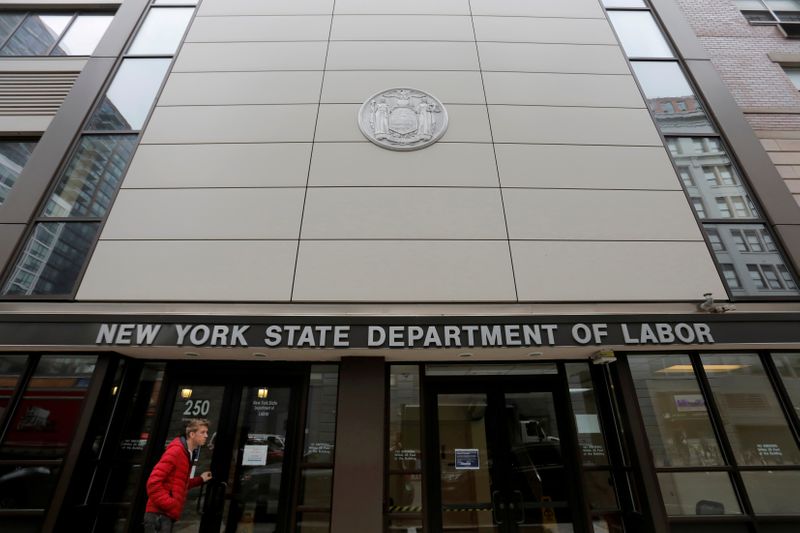(Reuters) – Judith Ramirez received a letter this month that she’d been dreading: The Honolulu hotel that furloughed her from a housekeeping job in March, during the lockdown triggered by the coronavirus pandemic, made her layoff permanent.
Ramirez, 40, was originally told she might be called back after business picked up. But infections increased in Hawaii over the summer and quarantine restrictions for visitors were extended, a blow to the state’s tourism-dependent hotels.
Six months into the pandemic, evidence of longer-term damage to the U.S. labor market is emerging, according to separate analyses of detailed monthly jobs data by labor economists and Reuters.
Retirements are drifting up, women aren’t reengaging with the job market quickly, and “temporary” furloughs like Ramirez’s are becoming permanent – trends that could weigh on the U.S. economic recovery in the short term as well as the country’s prospects in the long term.
Economic growth depends on how many people work. If more retire, or are kept from the job market because of childcare or health and safety issues, growth is slower.
“In the first few months of the recession we were much more focused on how many jobs could come back, how many jobs could be preserved,” said Kathryn Anne Edwards, a labor economist at RAND Corp. “Now the question is really how much damage has this done.”
WOMEN, OLDER WORKERS DROP OUT
The U.S. economic drag is falling heavily on two groups, women https://www.reuters.com/article/health-coronavirus-usa-women/analysis-working-women-and-especially-single-moms-are-hit-hard-by-coronavirus-downturn-idUSL1N2CP02O and older workers, who fueled https://www.reuters.com/article/us-usa-economy-women/tight-u-s-labor-market-shrinks-gender-and-race-gaps-to-record-lows-idUSKCN1VR2JC a rise in labor force participation prior to the pandemic. That supported stronger-than-expected economic growth in 2018 and 2019, and showed how a historically low unemployment rate drew people back into jobs.
Those workers may now be getting stranded. Women and workers aged 65 and older make up a disproportionate share of the 3.7 million people no longer working or actively seeking a job since the pandemic hit, Labor Department data show.
People 65 and older made up less than 7% of the workforce in February, but 17% of those who have left the labor market through August. Women previously accounted for 47% of the workforce, but make up 54% of the departed.
Initial evidence of longer-term trouble is starting to show in the monthly Current Population Survey (CPS) that forms the basis of regular government employment reports.
After a spike in women leaving the labor force in the early months of the pandemic, particularly to tend to family responsibilities, there’s been slower movement back into jobs compared to the months before the pandemic, according to an analysis of CPS data by Nick Bunker, economic research director for North America at the Indeed Hiring Lab.
The percentage of women and men who moved from employed to out of the labor force jumped as the pandemic layoffs hit in April. The number of women, however, who cited child care or family responsibilities as the reason, increased 178%, while the number of men citing it less than doubled, Bunker’s analysis showed.
The percentage of those women moving in the other direction month to month – from caring for family into a job – meanwhile has dropped, to a low of 5% in April from 6.6% in 2019, though it rose to 5.8% in July. It is lower for men too.
The data “suggests … that being out of the labor force for family reasons is a ‘stickier’ state” than prior to the pandemic, Bunker said.
The Center for Retirement Research at Boston College found CPS data shows a rising share of workers 65 and older are calling it quits, a development many economists expected given the risk COVID-19 poses to older people.
Nearly a fifth of that age group working as of July 2019 were retired as of July of this year, compared to 17% for the prior year, the center’s research concluded. The percentage of these workers who consider themselves “retired” instead of merely out of work also rose steadily in recent months, from 14.2% in April to 19.5% in June.
“It is something we expected might happen – that people who were close to retirement might transition earlier,” said Anqi Chen, the center’s assistant director for savings research.
NOT LIKE LAST RECESSION
The situation is rekindling debates from a decade ago about how unemployment can lead to long-term economic “scarring,” but the specifics are different.
The 2007-2009 recession fell disproportionately on the male-dominated construction and manufacturing industries. The pandemic has caused more job losses in services concentrated among women, and brought the added complication of school closings and concerns about the safety of daycare centers and nursing homes.
The road back to employment may be getting harder, as suggested in the analysis of CPS data by Rand’s Edwards. Of 7.6 million people “temporarily” laid off as of June, the number who had found jobs by July – 2.4 million – was eclipsed by the 2.8 million who either left the labor force altogether or said they were no longer expecting to get their jobs back. That’s the first time in the pandemic that was the case.
Ramirez, the laid-off housekeeper, said she has been looking for a job, but not many places are hiring with travel sharply down from pre-pandemic levels and many retail stores closed. Some businesses say they have a list of furloughed employees waiting to be called back. “There’s no hiring here,” she said. “People don’t know we are struggling.”
(Reporting by Howard Schneider and Jonnelle Marte; Editing by Paul Simao)


























